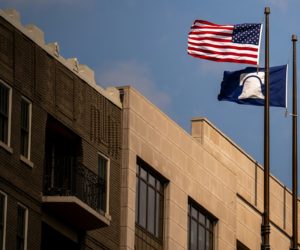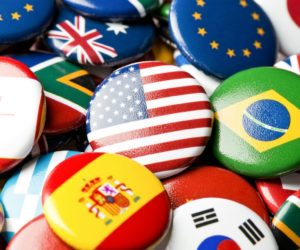
UPDATE II:
Today, the New York Times has an interesting article on how the pandemic has not only disrupted the cruise industry, but also international trade “driving up the cost of shipping goods and adding a fresh challenge to the global economic recovery.”
With container ships floating off the West coast in so-called “drift boxes,” because of jammed ports, a dearth of dockworkers and truck drivers -– many sickened by the virus or in quarantine — the pandemic and shortage of containers has created havoc in the exchange of consumer goods and food between North America and Asia and has had a ripple effect on economies around the world. Read more HERE.
UPDATE I
The story below describes in facts, figures and headlines the plight of the hundreds of thousands of seafarers who have been stranded on board their ships or in ports for many months –some for even more than a year – due to COVID-19 ramifications.
In the International Maritime Organization (IMO) video below, we see and hear how some of those men struggle to cope with their personal crises.
Original Story:
“Yea, and if some god shall wreck me in the wine-dark deep, even so I will endure…
For already have I suffered full much, and much have I toiled in perils of waves and war.
Let this be added to the tale of those.”
Homer, The Odyssey
On Monday, February 22, the United States reached and surpassed a grim and mournful milestone when the number of COVID-19 deaths passed 500,000.
Many of the first early infections were suffered by American passengers aboard cruise ships sailing in different parts of the world.
The first to grab such tragic headlines was the Diamond Princess that, in early February 2020, was anchored and quarantined off the coast of Yokohama, Japan, with more than 1,000 crew and 2,666 passengers aboard, including 428 Americans.
Most Americans were eventually airlifted home, several testing positive for the virus — eventually numbering more than 50.
Soon, other cruise ships became “coronavirus hotspots” and encountered similar fates as the Diamond Princess: They were refused entry into ports, forced to sail in circles or drop anchor offshore with their passengers and crews denied disembarkation and placed in quarantine.
During the two months following the Diamond Princess outbreak, at least 25 other cruise ships suffered COVID-19 cases and dozens of cruise ships returning home would meet similar restrictions on docking and disembarkation, on both coasts.
Perhaps the most publicized “homecoming” is that of the Grand Princess that was ordered to circle off the California coast for several days after 21 tested positive for COVID-19 in early March 2020.
On March 9, the Grand Princess with its 2422 passengers and 1,111 crew docked at the Port of Oakland and the process of testing, medical treatment, quarantining and relocation and repatriation of passengers and some crew began.
“More than 1,000 crew members aboard the ship [would] be tested and quarantined on the vessel.”
Around mid-April, 101 crewmembers from the Grand Princess and two other Princess cruise ships were flown home to Mexico on a charter flight. It was unclear then how many crew members remained on board the Grand Princess, but in an April 8, 2020, USA TODAY piece one gets a preview of a growing crisis on the seas surrounding us:
As of April 4, there were 52,000 crew members remaining aboard 73 cruise ships either docked or anchored in or near U.S. ports…Another 41,000 crew members were aboard 41 cruise ships underway close to American shores…
An April 8, 2020, “coronavirus timeline” for the San Francisco Bay area reads, “The Grand Princess cruise ship departs San Francisco, sailing into the Pacific Ocean, with an unreported destination…”
While it is difficult to track and ascertain the fate and whereabouts of mariners aboard every cruise ship, container ship, tanker ship, etc., during the pandemic, an overall picture is emerging of what that “unreported destination” has been for too many of these seafarers, and it “ain’t pretty.”
Hundreds of thousands of these hardworking men and women from all over the world (including from the Philippines, India, Russia, Indonesia, China, Ukraine, and Thailand), endure long family separations, live in cramped quarters, sacrifice so many things we take for granted, and work grueling hours, days, weeks and months. They seem to have been abandoned by shipowners, operators, organizations, even their governments — by the world, it seems. They have been shut out of ports, cannot leave their ships and when able to do so, are banned from traveling to their home countries and homes.
They have become “a nation of floating castaways, marooned on boats from the Galapagos Islands to Dubai port…”
At the peak of this crisis, in October 2020, approximately 400,000 seafarers were stranded on vessels throughout the world, and a similar number were prevented from returning to ships, either to earn their living or to return home, due to COVID-19 restrictions on travel and transit, according to a United Nations report.
Calling it “an unparalleled crisis” and referring to these mariners as “collateral victims” of the pandemic, the report emphasized how “This situation has severe impacts over the basic human rights of seafarers and other marine personnel, including the right to physical and mental health, the right to freedom of movement, and the right to family life.” The UN urged business, human rights organizations, and governments “to act on behalf of hundreds of thousands of seafarers and other maritime workers stuck at sea for endless months, in some cases more than a year, due to the COVID-19 pandemic.”
In an early February 2021 piece, referring to the October 2020 number of 400,000 stranded seafarers, Sandra Tsui at The Maritime Executive writes, “Little has changed since then.”
But, she concludes,
Hopefully, in the spirit of reciprocation at the start of a new year, nations will finally pay attention to this crisis and welcome seafarers, who bring food and medicine to their doorsteps.
As of this writing, more than 700 companies and organization recognizing their shared responsibility to resolve this humanitarian crisis at sea, have signed the Neptune Declaration on Seafarer Wellbeing and Crew Change that defines four main actions to address the crisis:
• Recognize seafarers as key workers and give them priority access to Covid-19 vaccines.
• Establish and implement gold standard health protocols based on existing best practice.
• Increase collaboration between ship operators and charterers to facilitate crew changes.
• Ensure air connectivity between key maritime hubs for seafarers.
We’ll keep you posted.
















